The World's Top 4 Most Interesting Mysteries, Finally Solved
 Top 7 Biggest Unsolved Mysteries on the Planet of All Time Top 7 Biggest Unsolved Mysteries on the Planet of All Time |
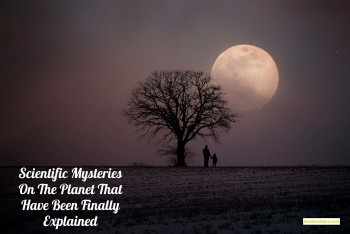 Top 9 Scientific Mysteries on the Planet That Have Been Finally Explained Top 9 Scientific Mysteries on the Planet That Have Been Finally Explained |
1. Mysterious "Blood Falls" on Taylor Glacier (in Antarctica)
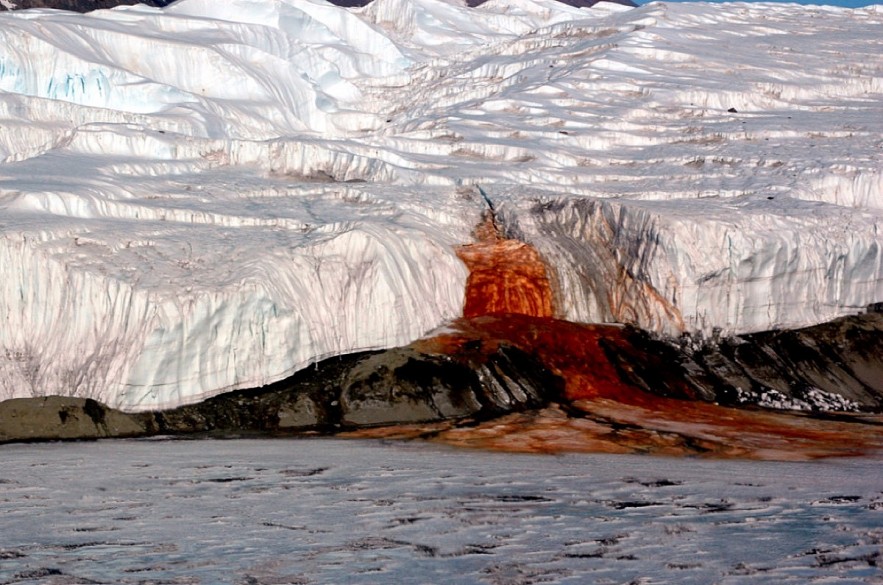 |
| Blood Falls flows into Lake Bonney from the Taylor Glacier's terminus. Scientists believe the discoloration, which is a form of reduced iron, is caused in part by a buried saltwater reservoir. |
This natural wonder, located in the heart of eastern Antarctica, has baffled scientists for over a century.
The strange red river known as "Blood Falls" flows along the Taylor Glacier and into the clear waters of Bonny Lake below.
The name is apt, as the waterfall resembles a horrifying bloodstain in the middle of a white wilderness.
 |
| According to World Atlas, "Blood Falls" is located on the Taylor Glacier of Lake Bonney in the McMurdo dry valley in Victoria Land, Antarctica. McMurdo Valley is the driest desert on Earth. According to scientists, for the past 2 million years, there has never been rain here. Photo: ZME |
For many years, the reason for the dark red color of this waterfall remained a mystery. Some have speculated that algae is to blame, but this has never been proven.
Finally, scientists from the University of Alaska have cracked the code. The color of "Blood Falls" is primarily due to iron oxide in the brine, a rust-like process.
Despite the extreme cold, "Blood Waterfall" never freezes because of the "super-saturated" salt and high pressure at the glacier's base. As a result, "Blood Waterfall" passed through countless cracks for 1.5 million years before rising to the surface to form this one-of-a-kind natural wonder.
Scientists proposed in 1911 that the river's red color was caused by a type of algae. However, new research indicates that glaciers covered the amount of iron underground beneath the salt lake 1.5 million years ago. The average water temperature is -17 degrees Celsius, and the salinity is 2-3 times that of normal sea water, preventing it from freezing.
2. Titan Moon
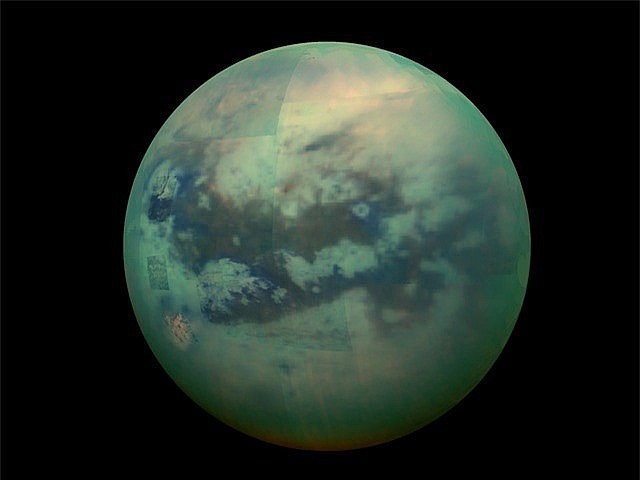 |
| Titan Moon |
Titan, Saturn's largest moon, has captivated astronomers and scientists for a very long time. Titan's landscape appears to be similar to Earth's at first glance, as it also has lakes and oceans.
Titan, unlike Earth, does not have water on its surface. The lakes and oceans there are mostly made up of other unique compounds like ethane, methane, and hydrocarbons. At Titan's surface temperature, these mixtures remain liquid.
Although Titan, like the Moon, is windy and has low gravity, waves have never been observed in its lakes and oceans.
There are numerous theories as to why this is the case. Some speculate that the lakes were frozen or coated with a thick asphalt-like substance that dampened the wave motion.
Recent research indicates that there are indeed waves in the liquid on Titan's surface, but they are nearly impossible to observe due to the extremely harsh and cold weather there.
3. Millipedes Torment Trains In Japan Every Eight Years in Japan
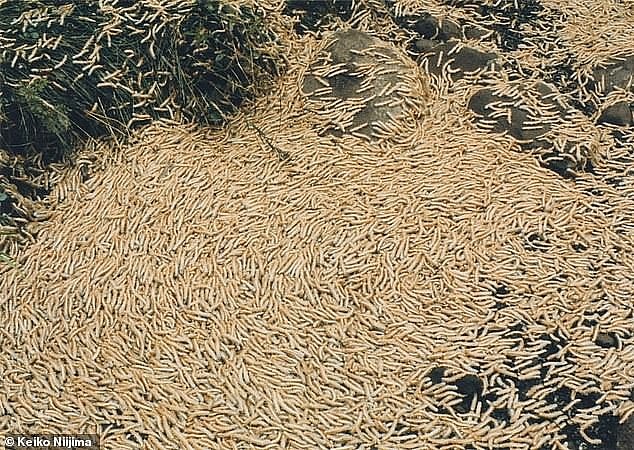 |
| Why Millipedes Torment Trains In Japan Every Eight Years |
The train millipede, Parafontaria laminata armigera, torments trains in Japan every eight years by obstructing the tracks.
"Train centipede swarm" is a phenomenon that has piqued the interest of both scientists and locals.
These arthropods, known for their striking colors and unique defensive abilities, frequently congregate in herds on train tracks in Japan's mountains, causing local trains to stop completely once a year.
For many years, the cause of this strange behavior was unknown until researcher Keiko Niijima discovered its secret:
Following investigation, it was discovered that the swarm of centipedes did not deliberately target the train tracks. They were actually looking for new feeding grounds when the tracks were cut off by train tracks.
Furthermore, all of these centipedes go through the same life stages at the same time, and their life cycles are 8 years long. So, every eight years, they develop into adults and must move in search of more food.
4. Cube-shaped Poop
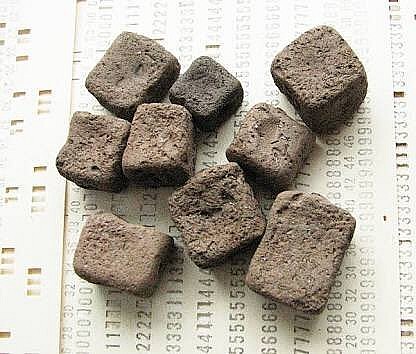 |
| Why wombats have cubed-shaped poop |
There are many amazing animals in nature, and some of them have unique abilities, such as bare-nosed koala poop.
This marsupial is nocturnal and can be found in Australia's eucalyptus forests and grasslands. The unique feature is that they can generate up to 100 "cubes" of waste per day.
What's more surprising is that these stools are shaped like a "cube" with distinct edges and corners.
It has long been unknown how naked-nosed kangaroos produce this type of dropping. Recent research by a team of scientists, however, has finally solved the mystery.
Researchers discovered that this animal's intestines have two grooves and that its internal organs are elastic during forensic experiments.
They also discovered that after eating, parts of the naked-nosed koalas' intestines continued to contract for several days in order to squeeze out feces and extract nutrients and water from it.
The poo becomes a "cube" after being squeezed dry numerous times, and because the buttocks of bare-nosed koalas are very soft and elastic, these "cubes" can pass through without any problems. any impediment, and is eventually excreted in a square shape.
 Top 9 Great Mysteries in History That Are Still Unsolved Top 9 Great Mysteries in History That Are Still Unsolved The city of Helike completely disappeared, the fall of the Minoan Empire, the disappearance of a Roman legion... are the greatest mysteries in history, which ... |
 Top 15 Mysteries Behind the Famous Artworks of All Time Top 15 Mysteries Behind the Famous Artworks of All Time We now know the "top secrets" concealed in these pieces of art, like paintings and statues, because of contemporary technology and hundreds of years of ... |
 Top 13 Most Creepy Mysteries That Have Finally Been Explained Top 13 Most Creepy Mysteries That Have Finally Been Explained Numerous eerie mysteries concerning particular individuals and locations on Earth have been unearthed. Some were unintentional, giving rise to eerie tales. Others had motives behind ... |
 The Most Expensive Painting in the World - Mysteries About Leonardo's Salvator Mundi The Most Expensive Painting in the World - Mysteries About Leonardo's Salvator Mundi The masterpiece painting "Salvator Mundi" by Leonardo da Vinci, which was once auctioned for more than $ 450 million, is currently unknown. |























